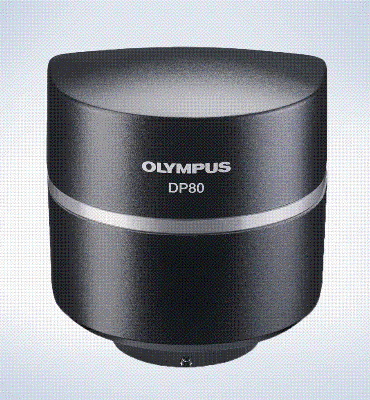Dec 20 2012
Olympus has launched the DP80, a unique microscopy camera for both colour documentation and fluorescent detection. Combining a colour and monochrome chip within the same housing, the DP80 provides high resolution brightfield imaging alongside sensitive photon detection. With versatile functionality, the control software permits rapid and automatic exchange between the chips, without switching camera or optical path.
 Olympus DP80 camera
Olympus DP80 camera
Furthermore, the DP80 has the capacity to overlay images from the two sensors with an accurate pixel-to-pixel correspondence, presenting significant opportunities for joint colour and fluorescent imaging. This feature provides assurance in both research and clinical environments, for example when combining histological staining with fluorescent dyes on the same sample.
The multi-purpose DP80 provides Olympus´ best quality imaging for colour and fluorescent microscopy applications alike. With a maximum resolution of 12.5 mega pixels, the colour sensor produces images rich in detail and clarity: sophisticated technologies like “Fine Detail Processing” and the real-time Olympus colour profiles are borrowed directly from Olympus’ flagship colour camera, the DP73. The 1.4 mega pixel monochrome sensor is optimised for highly sensitive photon detection, catching emission from a wide range of dyes, from DAPI to Cy-7. Exposure times of up to 60 seconds allow the imaging of very faint signals typical of delicate and live samples. Both sensor chips benefit from an in-built Peltier cooling system, producing images with impressive signal-to-noise ratio, ideal for the complex and detailed imaging requirements in life science. With a top speed of 57 frames per second the DP80 can follow rapid cellular events when required, while ensuring smooth focus and panning on the sample in everyday operations.
Designed to meet the variable demands of a shared work-place, the DP80 seamlessly shifts between imaging chips in only 3 seconds. This is quickly managed either automatically or at the click of an icon on the Olympus cellSens imaging software, which integrates all the camera functions and makes them easily available through its customisable user interface. The switching mechanism guarantees correct alignment between the two sensors and does not need re-calibration from the user. Images taken with the two chips can then be directly superimposed with single pixel precision to open up a wide array of new applications. By combining two imaging chips within the same housing, the DP80 holds significant advantages, eliminating the economical burden and mechanical inaccuracies of separate cameras using an optical path switch.
Flavio Giacobone, Product Manager for Micro-Imaging Solutions at Olympus Europa commented: “The flexibility and operating simplicity permitted by the DP80 is highly valuable in the fast-paced laboratory environments of today, which often require equipment to be versatile with interchangeable functions, without compromising on quality or performance. We are delighted to present the DP80 as a solution to these problems in the world of colour and fluorescent imaging and are excited at the prospects offered by the pixel precise joint image overlay.”